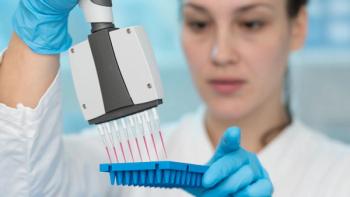
- BioPharm International-08-01-2013
- Volume 26
- Issue 8
Process Lifecycle Validation: Applying Risk Management
The authors discuss the application of risk management in process lifecycle validation, manufacturing, and change control.
A lifecycle approach for process validation is now an expectation from regulatory agencies (1, 2). Industry experts are developing methods to implement a lifecycle approach in various stages of process validation (3-5). Process validation is a requirement of the cGMP regulations for finished pharmaceuticals (6, 7). Historically, there has been limited application of risk management in defining the amount of data or number of studies/batches required for process-validation studies based on the complexity of the process or dosage form, type of unit operation, or development history. In contrast, a science- and risk-based approach applied throughout the process lifecycle is a more holistic and robust approach.
Risk management can be applied in the various areas of process validation, from early process design/development through maintenance of the validated state during commercial manufacturing (4). The risk-based approach does not mean doing less, but doing the right amount at the right time and avoiding nonvalue added activities as well as missing any crucial activity. Quality risk management (QRM) has been described in regulatory guidance for several aspects of process validation, such as the product lifecycle; extent of validation; determination of critical quality attributes (CQAs) and critical process parameters (CPPs); design of experiments (DOE); and sampling plans and statistical confidence levels. This article discusses the application of risk management in process lifecycle validation, manufacturing, and change control (4).
A number of factors, such as manufacturing equipment, raw materials, and processing conditions, are likely to impact product quality. Assurance of product quality is derived from product and process design, adequate control of input process parameters, and testing of in-process and finished product samples. Each step of the manufacturing process must be controlled to maximize the probability that the finished product meets all quality and process requirements. Broadly speaking, any study that supports process-parameters ranges in the license application and/or master batch record is considered part of the process lifecycle validation study such as development, characterization, and process performance qualification (PPQ). The validation master plan should document a complete list of process validation studies required for product/process licensure, including the appropriate level of effort and timing of process validation activities. Understanding challenges in applying risk management and common factors that may result in unsuccessful process validation would help to take appropriate measures to overcome them. This 30th article in the “Elements of Biopharmaceutical Production” series focuses on how a science- and risk-based approach toward process validation can be created and how such an approach can alleviate potential sources of failures.
Product Lifecycle-Based Approach
With the issuance of the FDA guidance document on process-validation, process validation activities should be viewed using a product lifecycle based approach (1). The three applicable stages are process design (i.e., process development, characterization, and validation), process qualification (e.g., equipment/utilities qualification and process performance qualification), and maintenance of validated state (i.e., change evaluation and continued process verification). Process validation studies are expected to enhance process understanding/knowledge throughout the product lifecycle (5, 8).
Product design
Product realization can be defined as: “The sum total of all the processes that are used to bring a product into being” and involves starting with raw materials and working them into the defined finished product (9). For pharmaceutical products under development, there are some basic rules that must be followed during transformation of an idea into a product to ensure patient protection: the product must be safe, product should be effective, and the product must meet a patient’s want or need. ICH Q10 describes the tools or enablers of product realization as knowledge management and risk management (10). The basis for design of a pharmaceutical product is the quality target product profile (QTPP) defined as: “A prospective summary of the quality characteristics of a drug product that ideally will be achieved to ensure the desired quality, taking into account safety and efficacy of the drug product” (11,12). The QTPP forms the basis of design for development of the product and the process and should be one of the first documents to be placed in a product specification or design-history file (9). In the QTPP for a solid oral dosage form, the target population is immunocompromised (i.e., the immune system is suppressed or not functioning properly). The attribute of microbial limits, normally less important, becomes a CQA, and the limit is considerably more stringent than for most tablets (9).
Process design
Process design (e.g., process development, scale-up, and characterization) starts with the identification of the properties of a target molecule or new chemical entity. As the product moves through preclinical and clinical studies (Phase I to III), scale up and manufacturing process optimization takes place. The process is finalized prior to qualification batches at commercial scale (also known as process performance qualification [PPQ] batches). Any planned, documented study that adds process knowledge and supports product licensure is considered part of process validation. Risk-based approaches could be used to determine study type (e.g., generic or product specific), number of experiments, and scale. Risk-based study design shows how to incorporate prior knowledge and potential product quality risks in deciding process parameters. Process parameters can be divided into three groups: parameters warranting multivariate evaluation, parameters whose ranges could be supported by univariate studies, and parameters that do not require new studies, but instead would employ ranges based on knowledge space or modular claims established from prior knowledge.
Quality-by-design (QbD) principles should be used when designing a process (11,12). QbD is a risk- and science-based concept for the development of product and processes that recognize that quality cannot be tested into products but should be built in by proper design. The key output of this flow is to develop and put in place a control strategy to assure product quality and to meet patient safety and efficacy requirements over the lifecycle of the product (13).
The basis for selection of parameters or evaluation in process studies should include scientific rationale and the use of risk-based approaches where relevant. The highest risk characteristics (i.e., parameters with the greatest likelihood of product impact) should be evaluated first. Critical process parameters (CPPs) and critical material attributes (CMAs) for that unit operation or process step need to be evaluated in process validation studies. Screening experiments, fractional factorial design, and response surface-design studies can be used to determine CPPs (14). In an example for a roller-compaction process of a solid oral dosage product, a Pareto chart shows the relative importance of inputs into the DOE is based on a failure mode and effect analysis (5, 15). Polymer concentration received the highest score and excipient particle size the lowest, hence polymer concentration, roller gap width, and roller-gap force were subsequently evaluated in a DOE.
CPPs. A CPP is defined as a process parameter whose variability has an impact on a CQA and, therefore, should be monitored or controlled to ensure that the process produces product of the desired quality (16). A risk-based approach for the identification of CPPs has been discussed for new products and existing products (5). For an existing product, comparing the normal operating range (NOR) to the proven acceptable range (PAR) should be considered when performing a risk assessment of potential CPPs. For manufacturing processes that are expected to consistently deliver the desired product quality, PAR should be wider compared to NOR. Some of the steps of drug product manufacturing are notoriously more difficult than others. For example, blending a powder mixture containing a low percentage of active ingredient, such as 1-2%, would be a critical step unless there is a downstream blending step that assures content uniformity, especially if the particle sizes of the ingredients are not well controlled.
Process Performance Qualification
Data must exist to demonstrate that the commercial-scale manufacturing process is reproducible, can be maintained within established parameters, and consistently produces product that meets product specifications. Successful process performance qualification (PPQ) is reflected by the level of robustness of the manufacturing formula, process recipe, and standard operating procedures (SOPs). Equipment and supporting systems to be used for PPQ need be qualified in accordance with GMPs (1). In most cases, PPQ will have a higher level of sampling, additional testing, and greater scrutiny of process performance. Consistency beyond the initial qualification batches is demonstrated through continued monitoring of a subset of the original parameters evaluated during PPQ.
Under the concept of using a science- and risk-based approach, when selecting the number of batches in PPQ, appropriate use of scientific data, risk management, and statistical tools should be considered. Batches should not be selected without taking these considerations into account. Note that international guidance documents currently maintain a minimum of three batches required for regulatory submissions (2, 17, 18).
Robustness of contamination controls that prevent presence of bioburden, endotoxin, or foreign contaminants in the process streams must be demonstrated in PPQ batches. This demonstration is accomplished through a combination of process controls such as raw material specifications and testing, equipment cleaning, and sanitization, facility/environmental requirements, operational control, and in-process monitoring during the production of the drug substance and drug product. Regulators consider aseptic processing operations, such as sterile sampling, filtration, filling and lyophilization, to be high-risk processes. For mammalian cell culture processes, viral clearance studies must be performed to assess effectiveness of the process steps in inactivating/removing viruses and to measure quantitatively the overall level of virus clearance by the process.
Technology transfer
The goal of technology-transfer activities is to transfer product and process knowledge between development and manufacturing and within or between manufacturing sites to achieve product realization (12). The transfer must demonstrate comparability of the product and process between the donor and recipient sites.
There may be multiple quality risk assessments associated with a technology transfer (e.g., risk assessments for process changes, facility and equipment changes, method transfer, and multiproduct operations). It is important, therefore, that QRM activities are adequately planned and documented. This risk assessment should be performed during the introduction of a new product to assess and review any potential cross-contamination or nonroutine risks of mix-up between existing products at the facility and the new product.
Continued Process Verification
Assurance that validated processes continue to perform as originally validated is achieved through in-process controls, testing against in-process limits and product specifications, change control, ongoing process monitoring, annual product reviews, and ongoing risk management. The monitoring strategy should be documented (e.g., parameter monitoring, and statistical process control).
Various changes that occur during a manufacturing process lifetime include normal process variability over time, changes in the equipment and control system, and process improvement. Trending of process monitoring data at established intervals is useful in the ongoing evaluation of the process. Statistical analysis and trending of the data should be applied to alert any undesirable process behavior. Where no significant changes have been made and process-monitoring verification confirms that subtle changes have not impacted the system or process and maintained consistent results, there is then no need for process revalidation. Certain regulatory authorities may require revalidation for a specific product or process. Changes to processes, raw materials, specifications, methods, procedures, labeling, and packaging systems must be evaluated per approved change-control procedure.
The evaluation of process changes can determine the significance of the change and define the necessary supporting validation study requirements and any potential requirements for regulatory reporting. An evaluation of the potential impact of a change on that unit operation, as well as potentially impacted steps downstream of that unit operation, is required to determine the scope and significance of required verification studies. It is important to determine the significance of a process change and define the review schedule of a validated process (5, 19–21).
References
1. FDA, Guidance for Industry—Process Validation: General Principles and Practices (Rockville, Md, January 2011).
2. EMA, Draft Guideline on Process Validation (Mar. 29, 2012).
3. PDA, Technical Report 60, Process Validation: A Lifecycle Approach (Feb.2013)
4. Risk Management Applications in Pharmaceutical and Biopharmaceutical Manufacturing, Edited by Mollah et al., (John Wiley & Sons, 2013).
5. A. Hamid Mollah and S. Bozzone, “Process Lifecycle Validation,” in Risk Management Applications in Pharmaceutical and Biopharmaceutical Manufacturing, Mollah et al. Eds, pages 179-225 (John Wiley & Sons, 2013).
6. 21 CFR 210 and 211: Current Good Manufacturing Practice In Manufacturing, Processing, Packing, Or Holding Of Drugs: General, Revised (Apr. 1, 2009).
7. EudraLex by the European Commission, Volume 4—Medicinal Products for Human and Veinary Use: Good Manufacturing Practice; Annex 15 to the EU Guide, Qualification and Validation (July 2001).
8. H. S. Baseman and M. Bogan, “Points to Consider For Commissioning And Qualification of Manufacturing Facilities and Equipment,” in Risk Management Applications in Pharmaceutical and Biopharmaceutical Manufacturing, Mollah et al. Eds, pages 129-177 (John Wiley & Sons, 2013).
9. K. Ginsbury, “Process Development and Clinical Product Manufacturing: The Use of Risk Management Tools in Development of Investigational Medicinal Products,”in Risk Management Applications in Pharmaceutical and Biopharmaceutical Manufacturing, Mollah et al., Eds pp 101-127 (John Wiley & Sons, 2013).
10. Q10, Pharmaceutical Quality System, ICH Harmonised Tripartite Guideline (June 2008).
11. A. S. Rathore and H. Winkle, Nature Biotechnology, 27, 26-34 (2009).
12. A. S. Rathore, “Process Analytical Technology (PAT): Application in Manufacturing of Biologics” in Quality for Biologics, 39-53 (BioPharm Knowledge Publishing, 2009).
13. B. Davis, “Quality By Design,” in Risk Management Applications in Pharmaceutical and Biopharmaceutical Manufacturing, Mollah et al. Eds, (John Wiley & Sons, 2013).
14. P. Bade, S. P. Kotu, A. S. Rathore, Journal of Separation Science, 35 3160-3169, (2012).
15. A. S. Rathore, A. Saleki-Gerhardt, S. H. Montgomery, and S. M. Tyler, BioPharm Intl., Part 1: (December 2008) and Part 2: (January 2009).
16. Q8 (R2) Pharmaceutical. Development, ICH Harmonised Tripartite Guideline, (August 2009).
17. WHO, Supplementary guidelines on good manufacturing practices: validation, Annex 4, WHO Technical Report Series, No. 937, 2006.
18. PIC/S PE-008-10, Guide To Good Manufacturing Practice For Medicinal Products Annexes (January 2013).
19. M. Raschiatore, “Pharmaceutical Product Manufacturing” in Risk Management Applications in Pharmaceutical and Biopharmaceutical Manufacturing, Mollah et al. Eds, pp 275-323 (John Wiley & Sons, 2013).
20. R. Ahmed and T. Genova, “Biopharmaceutical Manufacturing” in Risk Management Applications in Pharmaceutical and Biopharmaceutical Manufacturing, Mollah et al. Eds, pp 325-366, (John Wiley & Sons, 2013).
21. B. Harclerode et al., “Risk-Based Change Control” in Risk Management Applications in Pharmaceutical and Biopharmaceutical Manufacturing, Mollah et al. Eds, pp 367-385, (John Wiley & Sons, 2013).
Articles in this issue
over 12 years ago
Navigating Emerging Markets: South Koreaover 12 years ago
New Gene Patent Rulesover 12 years ago
Filling a Drug Safety Gapover 12 years ago
Bioprocessing Advances in Vaccine Manufactureover 12 years ago
Applying Continuous-Flow Pasteurization and Sterilization Processesover 12 years ago
Seeking Harmonization in Nanomedicines Regulatory Frameworkover 12 years ago
Pharma Invests in Gene Therapy Programsover 12 years ago
Making Connections: The Crucial Junctions in Single-use Systemsover 12 years ago
India Braces for New Drug Pricing Policyover 12 years ago
Generic Drugs Face Regulatory and Scientific ChallengesNewsletter
Stay at the forefront of biopharmaceutical innovation—subscribe to BioPharm International for expert insights on drug development, manufacturing, compliance, and more.





